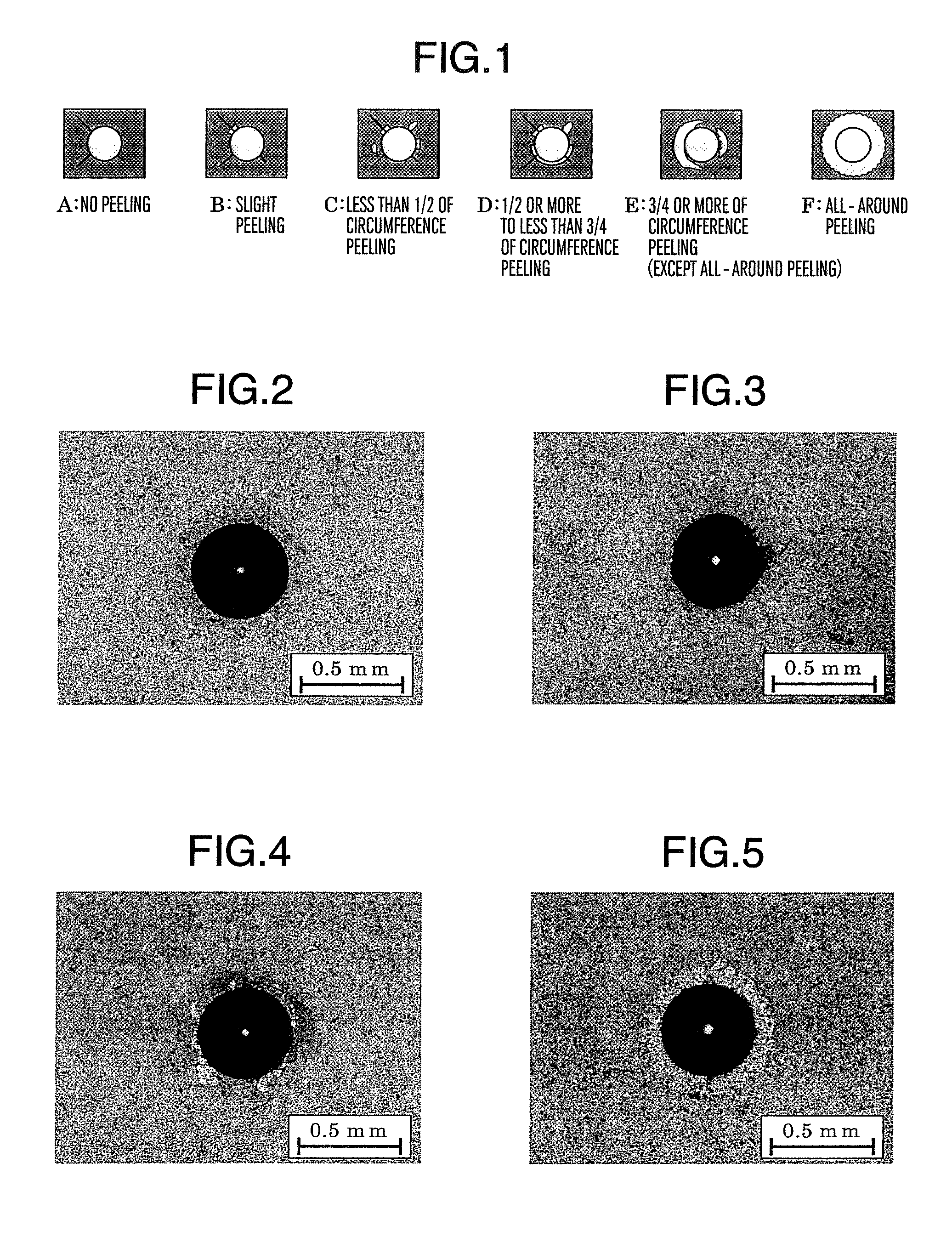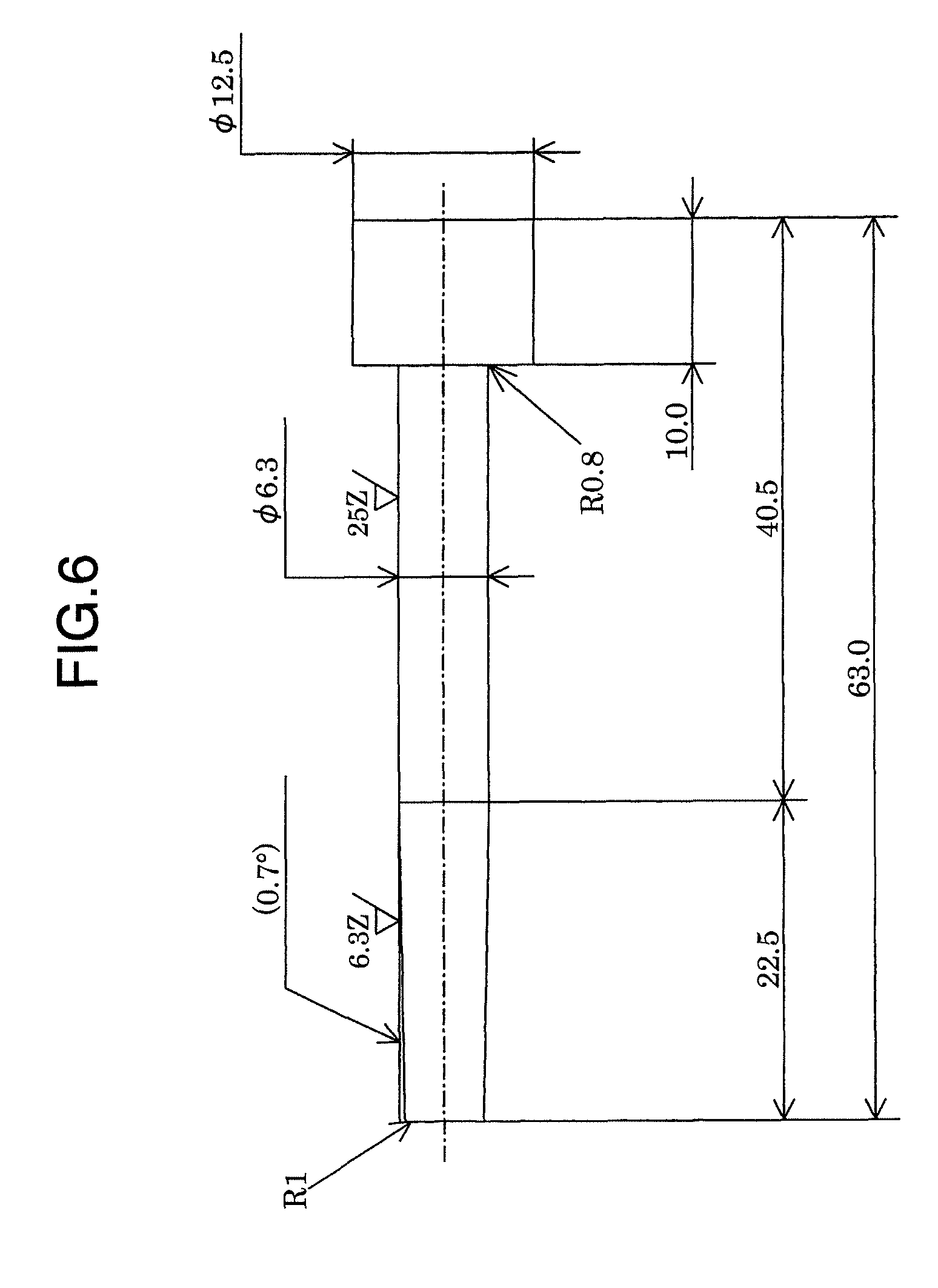Hard-material-coated member excellent in durability
a hard-material coating and excellent technology, applied in the field of hard-material coating members excellent, can solve the problems of wasting steel materials in a portion of the casting member in contact with aluminum alloy, unable to meet the above-mentioned requirements, and reducing the life of the mold for plastic working, so as to improve the wear resistance of the working plane of the mold, improve the wear resistance of the mold and other members, and improve the resistance to waste by melting.
- Summary
- Abstract
- Description
- Claims
- Application Information
AI Technical Summary
Benefits of technology
Problems solved by technology
Method used
Image
Examples
example 1
[0062]High-speed steel SKH 51 specified in JIS was prepared, maintained at 1,180° C. by heating in a vacuum, quenched by nitrogen gas cooling, and then tempered at 540 to 580° C. to be subjected to thermal refining to 64 HRC. Thereafter, the thus treated material was processed into plate-shaped test pieces with a thickness of 5 mm and a length of each side of 30 mm. Each of the test pieces was coated as a base material by PVD method.
[0063]As to a method for the coating, an arc ion plating apparatus was used. First, a bias voltage of −400 V was applied to each base material in an Ar atmosphere (pressure: 0.5 Pa) and plasma cleaning with a hot filament was conducted for 60 minutes. Then, using various metal targets as sources for vapors of metal components and a reaction gas composed of N2 gas as base and optionally CH4 gas, a film was formed at a temperature of the base material of 500° C., a reaction gas pressure of 3.0 Pa and a bias voltage of −50 V.
[0064]In the case of samples obt...
example 2
[0075]Next, cold-forging molds for molding a cup having a surface coating layer structure equal to those of present inventive test piece No. 3 and No. 8 in Table 1 and conventional test piece No. 23 in Table 2, respectively, were produced from SKH 51 (hardness: 64 HRC). The molds were evaluated as actual molds with respect to their life.
[0076]First, SKH 51 was roughly processed in an annealed state into a shape similar to that of a forging mold, after which it was maintained at 1,180° C. by heating in a vacuum, quenched by nitrogen gas cooling, and then tempered at 540 to 580° C. to be subjected to thermal refining to 64 HRC. Thereafter, finish processing was conducted and layers were formed by PVD method under the same conditions as in Example 1 for obtaining each of the molds described above, after conducting ion nitriding treatment in the case of test pieces to be subjected to this treatment before the coating treatment.
[0077]The molds produced above had a diameter of 30 mm and a...
example 3
[0080]Warm-forging punches for molding a cup having a surface coating layer structure equal to those of present inventive test piece No. 4 and No. 5 in Table 1 and conventional test piece No. 22 in Table 2, respectively, were produced and then evaluated as actual molds with respect to their life.
[0081]First, a toughness-improved material composed of high-speed steel as base and having the chemical composition shown in Table 4 was roughly processed as a base material into a shape similar to that of a mold, after which it was subjected to oil quenching from 1,080° C. and then thermal refining to 56 HRC by tempering at 600° C. Thereafter, finish processing was conducted and nitriding treatment and the formation of layers by PVD method were carried out under the same conditions as in Example 1 for obtaining each of the punches described above.
[0082]
TABLE 4Chemical composition (mass %)CSiMnCrWMoVCoFeBase0.500.150.454.201.502.001.200.75Bal-materialanceformold
[0083]The molds produced above...
PUM
| Property | Measurement | Unit |
|---|---|---|
| total thickness | aaaaa | aaaaa |
| thickness | aaaaa | aaaaa |
| thickness | aaaaa | aaaaa |
Abstract
Description
Claims
Application Information
 Login to View More
Login to View More - R&D
- Intellectual Property
- Life Sciences
- Materials
- Tech Scout
- Unparalleled Data Quality
- Higher Quality Content
- 60% Fewer Hallucinations
Browse by: Latest US Patents, China's latest patents, Technical Efficacy Thesaurus, Application Domain, Technology Topic, Popular Technical Reports.
© 2025 PatSnap. All rights reserved.Legal|Privacy policy|Modern Slavery Act Transparency Statement|Sitemap|About US| Contact US: help@patsnap.com


